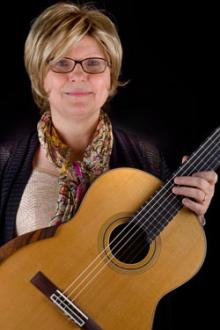The Core is equipped for biomechanical and physiological testing and analysis for human movements such as 11 Kistler force platforms, 23 Vicon motion capture cameras, electromyography sensors, movement speed sensors, electromagnetic sensors, a Biodex dynamometer, portable and stationary metabolic units, miniature 6-D force/torque sensors, etc. in over 7,000 sq ft space.
Graduate Student Opportunities
PhD, MA, MS in Kinesiology, Bioengineering, or Neuroscience and Cognitive Science (NACS)
The Neuromechanics Research Core at University of Maryland is looking for highly motivated Ph.D. and Masters students interested in studying (1) biomechanics and motor control of hand and finger and (2) biomechanics and physiology of amputee running. The student will be supported by a research assistantship (RA) or a teaching assistantship (TA). Potential candidates are encouraged to send their CV's to Dr. Jae Kun Shim (jkshim@umd.edu) or Dr. Ross Miller (rosshm@umd.edu) as early as possible.
Program
A student will develop a coherent area of expertise in human movement science by designing an academic program that includes introductory and advanced graduate courses in biomechanics, motor control, engineering, neuroscience, cognitive science, etc. A student can apply for a program of her/his background and interest in the Department of Kinesiology (Master's and PhD), Bioengineering Graduate Program (PhD), and Neuroscience and Cognitive Science (PhD).
Admission
Applications for admission should be received by January 15th. The following criteria will be considered for admission:
The main considerations for admission are: (a) the course background of the student (courses taken and/or experiences in Physics, Mechanics, Mathematics, Neuroscience, Computer Science, Anatomy, Physiology, Biomechanics, Motor Control, etc.); (b) the student's scores of all three GRE sections, and (c) the student's record of interest and/or academic performance in human movement sciences. LabView and MatLab, as well as experience in biomechanical and neurophysiological measurements and backgrounds in the control of human motion would be advantageous. Students from engineering and biological sciences are encouraged to apply. International students are required to demonstrate proficiency in English (TOEFL).
Webpages
- Graduate School: http://www.gradschool.umd.edu/
- Department of Kinesiology: http://sph.umd.edu/content/graduate-admissions
- Neuroscience and Cognitive Science: http://nacs.umd.edu/program/apply.html
- Bioengineering: http://www.bioe.umd.edu/home
Contacts
Dr. Ross Miller
rosshm@umd.edu
(301) 405-2495
Dr. Jae Kun Shim
jkshim@umd.edu
(301) 405-2492
Gender Effects on Knee Joint Loading and Prediction of Knee Loads using Instrumented Insoles and Machine Learning
Project description: Female individuals are twice as likely to experience knee osteoarthritis as compared to male individuals, but the underlying mechanisms behind this sex-based disparity are unclear. There is a well-documented association between greater knee loads and greater severity and progression of the disease. However, it is unknown if greater knee loading in healthy, young female individuals during activities of daily living can partially explain the discrepancy in knee osteoarthritis rates. Knee loading measurement is time-consuming, expensive, and is restricted to lab settings. We aimed to simplify the measurement of knee loading during sit-to-stand, stand-to-sit, walking, and running using custom instrumented insoles and deep learning methods. These findings could provide insight into the mechanisms that contribute to the disproportionate rate of female individuals affected by the disease, and these results could be used in future studies to reduce joint loads of the knee and potentially reduce the rate of knee osteoarthritis.
Instrumented shoe insole study
Project description: This study aims to use instrumented insoles and machine learning techniques to predict knee loading during gait. Moreover, we aim to investigate the gender differences in knee loading which have implications in knee osteoarthritis management. We have also submitted a pilot grant to Restore Foundation which aims to improve kinetic measures of their smart-phone computer vision application, OpenCap, via incorporating the insole data
Kinetics and Kinematics of a Modular Ankle Foot Orthosis
Project description: The modular AFO represents an innovative advancement in ankle foot orthosis (AFO) technology. In contrast to commercially available prefabricated AFOs, this modular system offers a dynamic solution. It can be assembled, disassembled, and reassembled in various configurations, allowing personalized fitting to individual rehabilitation needs. This adaptability enables immediate use post-ankle injury, promoting prompt mobility. Notably, the exoskeleton efficiently redirects loads away from sensitive areas, providing a superior alternative to traditional AFOs that restrict joint movement. The design ensures comfort and safety by channeling loads through the calf muscles and upper tibia/fibula, distinguishing it in the orthotic marke
Effects of age, gender, and sport modality on lower extremity cartilage and the Achilles tendon
Project description: Aging can lead to decreased ability to handle stress, raising risks of disability, chronic illness, and loss of independence. Physical activity slows this decline, but life priorities may reduce exercise over time. Osteoarthritis, especially in the knee, is a common issue, and early detection is vital. The ankle plantarflexor muscle group, crucial for movement, is affected by aging, affecting walking and running. Runners provide a baseline for studying loading effects on the body. This study aims to understand how swimming, explosive sports, and age impact lower extremity tissues and kinetics, focusing on factors contributing to knee osteoarthritis development in young and middle-aged athletes
Project: Modeling and cross-sectional analysis of movement quality with osseointegrated prostheses
Project description: Individuals with a transfemoral (i.e., above-knee) amputation are typically prescribed a traditional socket-based prosthesis. These individuals tend to exhibit challenges associated with walking such as hip hiking, slower walking speeds, and a greater energy expenditure during walking than their able-bodied counterparts. Developments in prosthesis design, however, may help alleviate some of these challenges experienced by socket-based users. One such development is osseointegration, which allows a direct attachment of the prosthesis to the bone of the amputated limb. However, research into the gait-related mechanical and energetic benefits of an OI prosthesis compared with a socket-based prosthesis is scant and limited to individuals who had a poor experience with a socket-based prosthesis. Thus, we are conducting a cross-sectional study examining gait mechanics and the metabolic cost of walking among high-functioning transfemoral amputees with either an OI or a traditional socket-based prosthesis to identify if and how these groups differ in the way they walk.
Additionally, we are performing computer simulations to examine how aspects of the amputated limb such as its residual limb length, and features of the socket-limb interface such as its compliance, influence energy utilization during walking in a transfemoral amputation model. We also seek to study the interactions between different prosthetic feet and footwear features using modeling and simulation, with implications for gait mechanics and the metabolic cost of walking.
Examining the influence of changes to midsoles in footwear on jump height, landing mechanics, and subsequent health of lower extremity structures
Project description: Exploring the pros and cons of these alterations to midsoles on sport performance while also exploring the pros and cons to lower extremity injury risk via force generation, force loading, and changes in joint angles.
Jae Kun Shim, Ph.D.
Professor
Department of Kinesiology
Maryland Robotics Center Neuroscience and Cognitive Science Program (NACS)
Background: Kinesiology, Biomechanics, Computer Science, Engineering
Ross H. Miller, Ph.D.
Associate Professor
Department of Kinesiology
Background: Mechanical Engineering, Biomechanics
Tim Kiemel, Ph.D.
Associate Research Professor
Department of Kinesiology
Background: Mathematics
Hyun Joon Kwon, Ph.D.
Assistant Research Professor
Department of Kinesiology
Background: Mechanical Engineering, Biomechanics
Joanne Klossner, PhD, ATC
Senior Lecturer
Department of Kinesiology
Background: Athletic Training, Sports Medicine
Serap Bastepe-Gray, MD, MM, OTR/L, CPAM
Assistant Research Professor
Department of Kinesiology
Background: Medicine, Occupational Health and Injury Prevention, Musician's Health
Kurt Collier, CP
Prosthetics Instructor
Department of Kinesiology
Background: Prosthetics
Visiting Professors
Post-Doctoral Researchers
Graduate Students
Rana Karimpour, M.S.
Ph.D. Student, Kinesiology
Background:Sports Sciences and Biomedical Engineering, University of Jyvaskyla, Finland
Research: Single-event multi-level surgeries on children with cerebral palsy.
Edward Chu, M.S.
Ph.D. Student, Kinesiology
Background: Kinesiology, University of Maryland
Research: Human locomotion.
Shakiba Rafiee
Ph.D. Student, NACS
Background: Neuroscience and Cognitive Science, University of Maryland
Research: Neural control of human locomotion.
Jenna Burnett
Ph.D. Student, Kinesiology
Background: Physics and Math, Purdue University; Kinesiology, Iowa State University
Research: Amputee locomotion after osseointegration surgeries.
Mia Caminita
Ph.D. Student, Kinesiology
Background: Industrial and Operational Engineering, Movement Science, University of Michigan
Research: Inter-personal motor synergies during collaborative tasks.
Liz Bell, M.S.
Ph.D. Student, Kinesiology
Background: Mechanical Engineering, University of Denver
Research: Biomechanics and energetics of locomotion in pregnant women.
Gina Garcia, M.A
Ph.D. Student, Kinesiology
Background: Exercise and Sport Science, Neuroscience, University of North Carolina Chapel Hill
Research: Whole-body coordination of athletes.
Hossein Ehsani, Ph.D.
Ph.D. Student, Neuroscience and Cognitive Science
Background: Biomedical Engineering/Biomechanics, Amirkabir University of Technology (IRAN)
Research: Inter-personal motor synergies and cognition.
Sam Snyder, B.S.
Masters Student, Kinesiology
Background: Mechanical Engineering, University of Maryland College Park
Research: Prediction of biomechanical/orthopedic risk factors using artificial neural network (deep learning).
Undergraduate Students
Undergraduate Research Assistants
Emily Nguyen
Major: Kinesiology
Archit Kambhamettu
Major: Computer Science & Math
Alumni Members
Selected Peer-reviewed Articles and Book Chapters
2023
- Kim MJ, Nam S, Kim B, Park I, Park J, Shim JK. Anthropometric, physical activity, and psychological characteristics of Korean adults with and without developmental coordination disorder (DCD), Frontiers in Neuroscience, 17: 1280356. doi: 10.3389/fnhum.2023.1280356.
- Garcia G, Caminita M, Hunter JG, Miller RH, Shim JK. Dorsiflexion shoes affect joint-level landing mechanics related to lower extremity injury risk in females. Sports Biomechanics. https://doi.org/10.1080/14763141.2023.2191867.
- Lindsey B, Hanley C, Reider L, §Snyder SJ, Zhou Y, Bell E, Shim JK, Hahn J, Vignos M, Eyal B. Accuracy of Military-Grade Wearable ECG Monitor Compared to Reference and Commercial Monitors. BMJ Military Health. 2023 Nov 24:e002541. doi: 10.1136/military-2023-002541.
- Kim SE, Lee J, Lee SY, Lee HD, Lee SC, Shim JK. Golf Swing in Response to Anteroposterior Ball Position. International Journal of Sports Science and Coaching, 2023. https://doi.org/10.1177/17479541221137672.
- Snyder SJ, Chu E, Um J, Heo YJ, Miller RH, Shim JK. Prediction of knee
adduction moment using innovative instrumented insole and deep learning neural networks in healthy female individuals. The Knee. 41: 115-123.
https://doi.org/10.1080/14763141.2023.2236589 - Kim MJ. Nam S, Park J. Shim JK. A Review of Characteristics and Assessment about Adults with Developmental Coordination Disorder, The Korean Journal of Growth and Development, 31(1): 1-14.
- Burnett JK, Kim YW, Kwon HJ, Miller RH, Shim JK. Whole body mass estimates and error propagation in countermovement jump: a simulated error study. Sports Biomechanics, DOI: 10.1080/14763141.2023.2236589
.
2022
- Bell EM, Carrignan J, Collier DK, Yang JS, Shim JK. Identifying Abilities that Define the Physical Function of People with Lower Extremity Amputations. Journal of Prosthetics and Orthotics. 34:e9-e19. doi: 10.1097/JPO.0000000000000356.
- Liu YC, Jafari A, Shim JK, Paley DA. Dynamic Modeling and Simulation of Electric Scooter Interactions with a Pedestrian crowd Using a Social Force Model. IEEE Transactions on Intelligent Transportation, vol. 23, no. 9, pp. 16448-16461, Sept. 2022, doi: 10.1109/TITS.2022.3150282.
- Park YS, Park DW, Koh K, Kwon HJ, Shim JK. Strength-dexterity Complementariness: Comparison between Left and Right Hands in Older Female Adults. Korean Journal of Sport Biomechanics, 31(4): 227-233.
.
2021
- Honarvar S, Caminita M, Ehsani H, Kwon HJ, Daiz-Mercado Y, Hahn JO, Kiemel T, Shim JK. Interpersonal motor synergy: coworking strategy depends on task constraints. Journal of Neurophysiology, 126: 1698–1709, doi:10.1152/jn.00023.2021.
- Honarvar S, Kim C, Daiz-Mercado Y, Koh K, Kwon HJ, Kiemel T, Caminita M, Hahn JO, Shim JK. Unveiling the Neuro-Mechanical Mechanisms Underlying the Synergistic Interactions in Human Sensorimotor System. Scientific Reports, 11, 203.
- Burnett J, Choi YT, Li H, Wereley NM, Shim JK. Vibration Suppression of a Composite Prosthetic Foot Using Piezoelectric Shunt Damping. IEEE Transactions on Biomedical Engineering (TBME), 68(9): 2741 - 2751. 2021.
- Kim SE, Lee J, Lee SY, Lee HD, Shim JK, Lee SC. Small changes in ball position at address causes a chain effect in golf swing. Scientific Reports, 11, 2694. 2021.
- Hunter JG, §Garcia GL, Ranadive SM, Shim JK, Miller RH. Roller Massage Prior to Running Does Not Affect Gait Mechanics in Well-Trained Runners. Journal of Sport Rehabilitation, 30(8):1178-1186. 2021.
2020
- Caminita M, Garcia GL, Miller RH, Kwon HJ, Shim JK. Sensory-to-Motor Overflow: cooling foot soles impedes squat jump performance. Frontiers in Human Neuroscience. 14(407).
- Hunter JG, Smith AMB, Sciarratta LM, Suydam S, Shim JK, Miller RH. Standardized lab shoes do not decrease loading rate variability in recreational runners. Journal of Applied Biomechanics. 36(5):340–344.
- Koh K, Park YS, Park DW, Shim JK. Dance training improves the CNS’s ability to utilize the redundant degrees of freedom of the whole body. Scientific Reports, 10. 22197.
2019
- Kim YS, Koh K, Shim JK. Inter-dependence between mathematically independent variability components in human multi-finger force control. Neuroscience Research. 158: 16-20.
- Hunter JG, Garcia GL, Shim JK, Miller RH. Fast Running Does Not Contribute More to Cumulative Load than Slow Running. Medicine & Science in Sports and Exercise, 51(6):1178-1185.
- Baum BS, Hobara H, Koh, K, Kwon HJ, Miller RH, Shim JK. Amputee Locomotion: Joint Moment Adaptations to Running Speed using Running-Specific Prostheses. American Journal of Physical Medicine and Rehabilitation 98(3):182-190.
2018
- Chu E, Kim YS, Hill G, Kim YH, Kim CK, Shim JK. Wrist Resistance Training Improves Motor Control and Strength. The Journal of Strength & Conditioning Research 32(4)
- Park YS, Koh K, Yang JS, Shim JK. Efficacy of rhythmic exercise and walking exercise in the older adults’ exercise participation rates and physical function outcomes. Geriatrics & Gerontology International. 17: 2311–2318.
- Karimpour R, Krupenevich R, Miller RH, Shim JK. Evaluation of gait asymmetry using force plates versus accelerometer. Journal of Mechanics in Medicine and Biology 18: 1850015.
-
Park YS, Koh K, Kwon HJ, Lee OJ, Shim JK. Aging differentially affects online control and offline control in finger force production. PLOS ONE 13 (5), e0198084.
-
Koh K, Kwon HJ, Kiemel T, Miller RH, Park YS, Kim MJ, Kwon YH, Kim YH, Shim JK. Intra-auditory integration between pitch and loudness in humans: Evidence of super-optimal integration at moderate uncertainty in auditory signals. Scientific Reports, 8:13708.
-
Park DW, Koh K, Park YS, Shim JK. Uncontrolled Manifold Analysis of Whole Body CoM of the Elderly: The Effect of Training using the Core Exercise Equipment. Korean Journal of Sports Biomechanics. 28(4): 1-6.
- Krupenevich RL, Miller RH, Hendershot BD, Schnall BL, Pruziner AL. Knee adduction moment peak and impulse do not change during the first six months of walking with a prosthesis. Gait & Posture (in press)
- Russell Esposito E, Miller RH. Maintenance of muscle strength retains a normal metabolic cost in simulated walking after transtibial limb loss. PLoS ONE 13(1)
- Allison LK, Kiemel T, Jeka JJ. Sensory-Challenge Balance Exercises Improve Multisensory Reweighting in Fall-Prone Older Adults. Journal of Neurologic Physical Therapy 42(2)
- Anson ER, Gimmon Y, Kiemel T, Jeka JJ, Carey JP. A Tool to Quantify the Functional Impact of Oscillopsia. Frontiers in Neurology 9:142
2017
- Park YS, Koh K, Yang JS, Shim JK. Efficacy of rhythmic exercise and walking exercise in older adults' exercise participation rates and physical function outcomes. Geriatrics & Gerontology International 17:12
-
Kiernan D, Miller RH, Baum BS, Kwon HJ, Shim JK. Amputee locomotion: Frequency content of prosthetic vs. intact limb vertical ground reaction forces during running and the effects of filter cut-off frequency. Journal of Biomechanics 60:248-252
-
Kim Y, Koh K, Yoon B, Kim WS, Shin JH, Park HS, Shim JK. Examining impairment of adaptive compensation for stabilizing motor repetitions in stroke survivors. Experimental Brain Research 235(12)
-
Miller RH, Brandon SCE, Scott Selbie W, Deluzio KJ. Commentary on "Modelling knee flexion effects on joint power absorption and adduction moment". Knee 24(5)
-
Miller RH, Krupenevich RL, Pruziner AL, Wolf EJ, Schnall BL. Medial knee joint contact force in the intact limb during walking in recently ambulatory service members with unilateral limb loss: a cross-sectional study. Peer J 5:e2960
-
Miller RH. Joint Loading in Runners Does Not Initiate Knee Osteoarthritis. Exercise and Sport Sciences Reviews 45(2)
-
Krupenevich RL, Pruziner AL, Miller RH. Knee Joint Loading during Single-Leg Forward Hopping. Medicine & Science in Sports & Exercise 49(11)
-
Logan D, Kiemel T, Jeka JJ. Using a System Identification Approach to Investigate Subtask Control during Human Locomotion. Frontiers in Computational Neuroscience 10:146
-
Anson ER, Kiemel T, Carey JP, Jeka JJ. Eye Movements Are Correctly Timed During Walking Despite Bilateral Vestibular Hypofunction. Journal of the Association for Research in Otolaryngology 18:4
-
Massarelli N, Yau AL, Hoffman KA, Kiemel T, Tytell ED.Characterization of the encoding properties of intraspinal mechanosensory neurons in the lamprey. Journal of Comparative Physiology. A, Neuroethology, Sensory, Neural, and Behavioral Physiology 203(10)
2016
- Massarelli N, Clapp G, Hoffman K, Kiemel T. Entrainment ranges for chains of forced neural and phase oscillators. Journal of Mathematical Neuroscience 6:6. Download PDF
- Hwang S, Agada P, Grill S, Kiemel T, Jeka JJ. A central processing sensory deficit with Parkinson’s disease. Experimental Brain Research 234:2369–2379.
- Hwang S, Agada P, Kiemel T, Jeka JJ. Identification of the unstable human postural control system. Frontiers in systems neuroscience. 10: 22. Download PDF
- Edwards WB, Miller RH, Derrick TR. Femoral strain during walking predicted with muscle forces from static and dynamic optimization. Journal of Biomechanics 49(7): 1206-1213. Download PDF
- Karol S, Koh K, Kwon HJ, Park YS, Young Ha Kwon, Shim JK. Aging-related changes in hand intrinsic and extrinsic muscles and hand dexterity: an MRI investigation. Korean Journal of Sport Biomechanics 25:371-381.
- Baum BS, H Hobara, YH Kim, Shim JK. Amputee locomotion: Ground reaction forces during submaximal running with running-specific prostheses. Journal of Applied Biomechanics. EPub ahead of Print.
- Kim YS, Kim WS, Koh K, Yoon BC, Damiano DL, Shim JK. Deficits in motor abilities for multi-finger force control in hemiparetic stroke survivors. Experimental Brain Research 234:2391-402. Download PDF
- Park YS, Lim YT, Koh K, Kim JM, Kwon HJ, Yang JS, Shim JK. Association of spinal deformity and pelvic tilt with gait asymmetry in adolescent idiopathic scoliosis patients: ground reaction force investigation. Clinical Biomechanics 36:52-57.
- Koh K, Kwon HJ, Park YS, Kiemel T, Miller RH, Kim YH, Shin JH, Shim JK. Intra-auditory integration improves motor performance and synergy in an accurate multi-finger pressing task. Frontiers in Human Neuroscience 10:1-11. Download PDF
- Park YS, Kwon HJ, Koh K, Shim JK. Age-related Changes in Multi-finger Synergy during Constant Force Production with and without Additional Mechanical Constraint. Korean Journal of Sports Biomechanics 26:175-181. Download PDF
- Koh K, Park YS, Park DW, Hong CK, Shim JK. Development of Core Strength Training Equipment and Its Effect on the Performance and Stability of the Elderly in Activities of Daily Living. Korean Journal of Sports Biomechanics 26:229-236.
2015
- Couzin-Fuchs E, Kiemel T, Gal O, Ayali A, Holmes P. Intersegmental coupling and recovery from perturbations in freely-running cockroaches. Journal of Experimental Biology 218:285–297.
- Miller RH, Esterson AY, Shim JK. Joint contact forces when minimizing the external knee adduction moment by gait modification: a computer simulation study. The Knee 22(6), 481-489. Download PDF
- Koh K, Kwon HJ, Yoon BC, Cho Y, Shin JH, Hahn JO, Miller RH, Kim YH, Shim JK. The role of tactile sensation in online and offline hierarchical control of multi-finger force synergy. Experimental Brain Research 233(9), 2539-2547.
- Miller RH, Hamill J. Optimal footfall patterns for cost minimization in running. Journal of Biomechanics 48(11), 2858-2864. Download PDF
- Gentili RJ, Oh H, Huang DW, Katz GE, Miller RH, Reggia JA. A neural architecture for performing actual and mentally simulated movements during self-intended and observed bimanual arm reaching movements. International Journal of Social Robotics 7(3), 371-392.
- Graham RB, Smallman CLW, Miller RH, Stevenson JM. A dynamical systems analysis of assisted and unassisted anterior and posterior hand-held load carriage. Ergonomics 58(3), 480-491.
- Miller RH, Edwards WB, Deluzio KJ. Energy expended and knee joint load accumulated when walking, running, or standing for the same amount of time. Gait & Posture 41(1), 326-328. Download PDF
- Kim YS, Kim WS, Shim JK, Suh DW, Kim TY, Yoon BC. Difference of motor overflow depending on the impaired or unimpaired hand in stroke patients. Human Movement Science 39:154-62
- Park JB, Han DW, Shim JK. Effect of resistance training of the wrist joint muscles on multi-digit coordination. Perceptual and Motor Skills 120:816-40. Download PDF
- Carrignan J, Park YS, Koh K, Kwon HJ, Shim JK. Common basketball injuries and their prevention. Korean Journal of Growth and Development 23:1-6.
- Hsu J, Koh K, Park YS, Kwon HJ, Kim YH, Shin JH, Shim JK. Aging-related changes in hand intrinsic and extrinsic muscles and hand dexterity: an MRI investigation. Korean Journal of Sport Biomechanics 25:371-381.
2014
- Logan D, Ivanenko YP, Kiemel T, Cappellini G, Sylos-Labini F, Lacquaniti F, Jeka JJ. Function dictates the phase dependence of vision during human locomotion. Journal of Neurophysiology 112:165–180
- Brandon SCE, Miller RH, Thelen DG, Deluzio KJ. Selective lateral muscle activation in subjects with moderate medial knee osteoarthritis does not unload medial knee condyle. Journal of Biomechanics 47(6), 1409-1415.
- Miller RH. A comparison of muscle energy models for simulating human walking in three dimensions. Journal of Biomechanics 47(6), 1373-1381.
- Miller RH, Edwards WB, Brandon SCE, Morton AM, Deluzio KJ. Why don’t most runners get knee osteoarthritis? A case for per-unit-distance loads. Medicine & Science in Sports & Exercise 46(3), 572-579.
- Hobara H, Baum BS, Kwon HJ, Linberg A, Wolf EJ, Miller RH, Shim JK. Amputee locomotion: lower extremity loading using running-specific prostheses. Gait & Posture 39(1), 386-390.
- Otsuka M, Shim JK, Kurihara T, Yoshioka S, Isaka T. Effect of expertise on 3D force application during the starting block phase and subsequent steps in sprint running. Journal of Applied Biomechanics 30:390-400.
- Kim Y, Kim J, Shim JK, Suh DW, Yoon BC. The hypoalgesic effect of remote tactile sensory modulation on the mechanical sensitivity of trigger points: A randomized controlled study. NeuroRehabilitation 35:607-614.
- Logan D, Kiemel T, Jeka JJ. Asymmetric sensory reweighting in human upright stance. PLoS ONE 9(6): e100418.
- Anson A, Agada P, Kiemel T, Ivanenko Y, Lacquaniti F, Jeka J. Visual control of trunk translation and orientation during locomotion. Experimental Brain Research 232:1941–1951.
- Hwang S, Agada P, Kiemel T, Jeka JJ. Dynamic reweighting of three modalities for sensor fusion. PLoS ONE 9(1): e88132.
2013
- Anson A, Rosenberg R, Agada A, Kiemel T, Jeka J. Does visual feedback during walking result in similar improvements in trunk control for young and older healthy adults? Journal of NeuroEngineering and Rehabilitation 10:110.
- Baum BS, Huang J, Schultz MP, Tian A, Shefter B, Wolf EJ, Kwon HK, Shim JK. Amputee Locomotion: Determining the inertial properties of running-specific prostheses. Archives of Physical Medicine and Rehabilitation 94:1776-1783.
- Kim Y, Shim JK, Hong YK, Lee SH, Yoon BC. Cutaneous sensory feedback plays a critical role in agonist-antagonist co-activation. Experimental Brain Research 229:149-156.
- Kim Y, Pyeon HY, Son J, Shim JK, Yoon BC. A neuromuscular strategy to prevent spinal torsion: backward perturbation alters asymmetry of transverus abdominis muscle thickness into symmetry. Gait and Posture 38:231-235.
- Hobara H, Baum BS, Kwon HJ, Miller RH, Ogata T, Kim YH, Shim JK. Amputee locomotion: Spring-like leg behavior and stiffness regulation using running-specific prostheses. Journal of Biomechanics 46:2483-2489.
- Russell EM, Miller RH, Umberger BR, Hamill J. Lateral wedges alter mediolateral load distribution at the knee in obese individuals. Journal of Orthopaedic Research 31(5), 665-671.
- Miller RH, Brandon SCE, Deluzio KJ. Predicting sagittal plane biomechanics that minimize the axial knee joint contact force during walking. Journal of Biomechanical Engineering 135(1), 011007.
2012
- Shim JK, Karol S, Kim YS, Seo NJ, Kim YH, Kim YS, Yoon BC. Tactile feedback plays a critical role in maximum finger force production. Journal of Biomechanics 45: 415-420.
- Kim MJ, Karol S, Park JB, Auyang A, Kim YH, Kim S, Shim JK. Inter-joint synergies increase with motor task uncertainty in a whole-body pointing task. Neuroscience Letters 512(2): 214-217.
- Hook A, Karol S, Park JB, Kim YH, Shim JK. Handwriting: 3-d kinetic synergies in circle drawing movements. Motor Control 16(3):329-52.
- Park J, Baum BS, Kim YS, Kim YH, Shim JK. Prehension synergy: use of mechanical advantage during multi-finger torque production on mechanically fixed- and free objects. Journal of Applied Biomechanics 28(3):284-90
- Seo NJ, Shim JK, Engel A, Enders L. Grip surface affects maximum pinch force. Human Factors 53(6):740-8
- Miller RH, Brandon SCE, and Deluzio KJ (2012). Predicting sagittal plane biomechanics that minimize the axial knee joint contact force during walking. ASME Journal of Biomechanical Engineering 135(1):011007.
- Russell EM, Miller RH, Umberger BR, and Hamill J. Lateral wedges alter mediolateral load distributions at the knee joint in obese individuals. Journal of Orthopaedic Research 31(5): 665–671.
- Miller RH, Umberger BR, and Caldwell GE. Sensitivity of maximum sprinting speed to characteristic parameters of the muscle force-velocity relationship. Journal of Biomechanics 45, 1406-1413. Download PDF
- Miller RH, Umberger BR, and Caldwell GE. Limitations to maximum sprinting speed imposed by muscle mechanical properties. Journal of Biomechanics 45, 1092-1097. Download PDF
- Miller RH, Umberger BR, Hamill J, and Caldwell GE. Evaluation of the minimum energy hypothesis and other potential optimality criteria for human running. Proceedings of the Royal Society B: Biological Sciences 279, 1498-1505. Download PDF
- John D, Miller RH, Kozey-Keadle SL, Caldwell GE, and Freedson PS. Biomechanical examination of the plateau phenomenon in ActiGraph vertical activity counts. Physiological Measurement 33, 219-230. Download PDF
- Bair W-N, Kiemel T, Jeka JJ, Clark JE. Development of multisensory reweighting is impaired for quiet stance control in children with developmental coordination disorder (DCD). PLoS ONE 7(7): e40932.
- Polastri PF, Kiemel T, Barela JA, Jeka JJ. Dynamics of inter-modality re-weighting during human postural control. Experimental Brain Research 223:99–108. Download PDF
- Scholz JP, Park E, Jeka JJ, Sch ̈oner G, Kiemel T.How visual information links to multijoint coordination during quiet standing. Experimental Brain Research 222:229–239.
2011
-
Shim JK, Park JB, Kim MJ, Kim S. Motor synergy research through Uncontrolled Manifold analysis. Korean Jouranl of Sport Psychology. 22(4): 127-142, 2011.
-
Karol S,Kim YS, Huang J, Kim YH, Koh J, Yoon BC, Shim JK. Multi-finger pressing synergies chane with the level of extra degrees of freedoms. Experimental Brain Research. 208(3): 359-367, 2011.
-
Miller RH and Caldwell GE. Practical lessons on running and jumping from computer simulations. Track and Cross Country Journal 1, 38-48. Download PDF
-
Hamill J, Russell EM, Gruber AH, and Miller RH. Impact characteristics in shod and barefoot running. Footwear Science 3, 33-40. Download PDF
-
Hasson CJ, Miller RH, and Caldwell GE (2011). Contractile and elastic ankle joint muscular properties in young and older adults. PLoS ONE 6, e15953. Download PDF
2010
-
Shim JK, Hooke AW, Kim YS, Karol S, Park J, Kim YH. Handwriting: Hand-pen contact force synergies in circle drawing tasks. Journal of Biomechanics 43:2249-2253.
-
Kim YS, J Park, Shim JK Effect of aquatic locomotion exercise and progressive resistance exercise on patients who have undergone lumbar discectomy. Archives of Physical Medicine and Rehabilitation. 91:208-214. Download PDF
-
Park JB, Kim YS, Shim JK. Prehension synergy: effects of static constraints on multi-finger prehension. Human Movement Science.29: 19-34. Download PDF
-
Kim YS, Park J, Shim JK. Effect of follow-up training frequency on lumbar extension strength in hernia-operated patients after initial recovery and training. Journal of Rehabilitation Medicine. 42:839-845, 2010
-
Sheaff AK, Bennett A, Hanson ED, Kim Y, Hsu J, Shim JK, Edwards ST, Hurley BF. Physiological determents of the candidates physical ability tests in firefighters. Journal of Strength and Conditioning Research. 24: 3112-3122.
-
Karol S, Kim YS, Huang J, Kim YH, Koh J, Yoon BC, and Shim JK. Multi-finger pressing synergies change with the level of extra degrees of freedom. Experimental Brain Research.
-
Miller RH, Chang R, Baird JL, Van Emmerik REA, and Hamill J (2010). Variability in kinematic coupling assessed by vector coding and continuous relative phase. Journal of Biomechanics 43, 2554-2560. Download PDF
-
Gillette JC, Stevermer CA, Miller RH, Meardon SA, and Schwab CV. The effects of age and type of carrying task on lower extremity kinematics. Ergonomics 53, 355-364. Download PDF
2009
-
Kim CK, Lee DY, Kim YS, Huang JF, Park JB, Shim JK. Finger force enslaving and surplus in spinal cord injury patients. Experimental Brain Research. 195: 627-33. Download PDF
-
Shim JK, Karol S, Kim, YS, Yoon BC, Kim CK. Synergies: Coordinative interactions of motor effectors. ICHPER SD Asia Journal of Research. 1: 9-16. Download PDF
-
Goodman S, Haufler AJ, Shim JK, Hatfield BD. Regular and random components in aiming point trajectory during rifle aiming and shooting. Journal of Motor Behavior. 41: 367-82. Download PDF
-
Kim YS, Shim JK. Effect of backward walking rehabilitation exercise (ABRE) program on lumbar extension strength inhernia-operated patients. Journal of Sport and Leisure Studies. 35:801-813.
-
Park WI, Park SY, Choi HM, Lee JH, Jeon JM, Kim JK, Shim JK, Nho HS. Cardiovascular responses over the time course during muscle group III stimulation in prehypertensive individuals. Journal of Life Science. 19: 1564-1578, 2009
-
Hamill J, Russell EM, Gruber AH, Miller RH, and O'Connor KM (2009). Extrinsic foot muscle forces when running in varus, valgus and neutral shoes. Footwear Science 1, 153-161.Download PDF
-
Miller RH, Caldwell GE, Van Emmerik REA, Umberger BR, and Hamill J (2009). Ground reaction forces and lower extremity kinematics when running with suppressed arm swing. ASME Journal of Biomechanical Engineering 131, 124502. Download PDF
-
Miller RH and Hamill J (2009). Computer simulation of the effects of shoe cushioning on internal and external loading during running impacts. Computer Methods in Biomechanics and Biomedical Engineering 12, 481-490. Download PDF
-
Miller RH, Gillette JC, Derrick TR, and Caldwell GE (2009). Muscle forces during running predicted by gradient-based and random search static optimisation algorithms. Computer Methods in Biomechanics and Biomedical Engineering 12, 217-225. Download PDF
2008
-
Shim JK, Hsu J, Karol S, Hurley B.F. Strength training increases training-specific multi-finger coordination in humans. Motor Control. 12:311-329. Download PDF
-
Oliveira MA, Park, JB, Hsu J, Clark JE, Shim JK. Age-related changes of multi-finger interactions during the adulthood. Human Movement Science. 27:714-727. Download PDF
-
Hooke AW, Park JB, Shim JK. Forces behind the words: development of the Kinetic Pen. Journal of Biomechanics. 41:2060-2064. Download PDF
-
Kim SW, Shim JK, Zatsiorsky VM, Latash ML. Finger Interdependence: Linking the Kinetic and Kinematic Variables. Human Movement Science. 27:408-422. Download PDF
-
Shim JK, Oliveira MA, Hsu J, Huang J, Park J, Clark JE. Hand Digit Control in Children: Age-related changes in hand digit force interactions during maximum flexion and extension force production tasks. Experimental Brain Research, 176: 374-386. Download PDF
-
Shim JK, Karol S, Hsu J, Oliveira MA. Hand digit control in children: Motor overflow in multi-finger force space during maximum voluntary force production. Experimental Brain Research. 186: 443-456 Download PDF
-
Oliveira MA, Rodrigues AM, Caballero RMS, de Souza Peterson RD, Shim JK. Strength and isometric torque control in individuals with Parkinson’s disease. Experimental Brain Research. 184: 445-450. Download PDF
-
Hamill J, Miller RH, Noehren B, and Davis IS. A prospective study of iliotibial band strain in runners. Clinical Biomechanics 23, 1018-1025. Download PDF
-
Miller RH, Meardon SA, Derrick TR, and Gillette JC (2008). Continuous relative phase variability during an exhaustive run in runners with a history of iliotibial band syndrome. Journal of Applied Biomechanics 24, 262-270. Download PDF
2007
-
Shim JK, Park J. Prehension synergies: principle of superposition and hierarchical organization in circular object prehension, Experimental Brain Research, 180:541-556. Download PDF
-
Shim JK, Huang J, Hooke AW, Latash ML, Zatsiorsky VM. Multi-digit maximum voluntary torque productions on a circular object. Ergonomics, 50(5): 660-675. Download PDF
-
Oliveira MA, Shim JK. Motor Redundancy in Human Movements. Brazilian Journal of Motor Behavior. 29: 9-25.
-
Kim CK, Lee, DY, Lee YC, Shim JK, Huang JF. Development of finger strength and control. Journal of Sport and Leisure Studies. 31: 961-973.
-
Miller RH, Lowry JL, Meardon SA, and Gillette JC. Lower extremity mechanics of iliotibial band syndrome during an exhaustive run. Gait and Posture 26, 407-413. Download PDF
2006
-
Oliveira MA, Loss J, Petersen R, Clark JE, Shim JK. Effect of kinetic redundancy on hand digit control in children with DCD. Neuroscience Letters 410:42-46. Download PDF
-
Shim JK, Park J, Zatsiorsky VM, Latash ML. Adjustments of prehension synergies in response to self-triggered and experimenter-triggered loading and torque perturbations. Experimental Brain Research, 175: 641-653. Download PDF
-
Kim SW, Shim JK, Zatsiorsky VM, Latash ML. Anticipatory adjustments of multi-finger synergies in preparation to self-triggered perturbations. Experimental Brain Research, 174: 604-612. Download PDF
-
Newton RU, Gerber A, Nimphius S, Shim JK, Doan BK, Robertson M, Pearson D, Craig B, Hakkinen K, and Kraemer W. Determination of functional strength imbalance of the lower extremities. Journal of Strength and Conditioning Research. 20: 971-977. Download PDF
-
Mark L. Latash, Jae Kun Shim, Minoru Shinohara, Vladimir M. Zatsiorsky. Changes in finger coordination and hand function with advanced age. In: Latash ML (Ed.) Motor control and learning. 141-159, Springer. New York, NY.
2005
-
Shim JK, Latash ML, Zatsiorsky VM. Prehension synergies: Trial-to-trial variability and principle of superposition during static prehension in three dimensions. Journal of Neurophysiology 93: 3649-3658. Download PDF
-
Shim JK, Kim SW, Oh SJ, Kang N, Zatsiorsky VM, Latash ML. Plastic changes in interhemispheric inhibition with practice of a two-hand force production task: a transcranial magnetic stimulation study. Neuroscience Letters 372: 104-108. Download PDF
-
Shim JK, Latash ML, Zatsiorsky VM. Prehension synergies in three dimensions. Journal of Neurophysiology. 93: 766-776. Download PDF
-
Shim JK, Olafsdottir H, Zatsiorsky VM, Latash ML. The emergence and disappearance of multi-digit synergies during force production tasks. Experimental Brain Research. 164: 260-270. Download PDF
-
Latash ML, Shim JK, Smilga AV, Zatsiorsky VM. A central back-coupling hypothesis on the organization of motor synergies: a physical metaphor and a neural model, Biological Cybernetics 3: 1-6. Download PDF
-
Goodman SR, Shim JK, Zatsiorsky VM, Latash ML. Motor variability within a multi-effector system: Experimental and analytical studies of multi-finger production of quick force pulses. Experimental Brain Research. 163: 75-85. Download PDF
-
Mark L. Latash, Halla Olafsdottir, Jae Kun Shim, Vladimir M. Zatsiorsky . Synergies that stabilize and destabilize action. In: Gantchev N. (Ed.) From Basic motor control to functional recovery – IV, pp. 19-25, Marin Drinov Academic Publishing House: Sofia, Bulgaria.
2004
-
Jeka J, Kiemel T, Creath R, Horak F, Peterka R. Controlling human upright posture: velocity information is more accurate than position or acceleration. The Journal of Neurophysiology. 92:2368–2379.
-
Shim JK, Lay B, Zatsiorsky VM, Latash ML. Age-related changes in finger coordination in static prehension tasks. Journal of Applied Physiology, 97:213-24. Download PDF
-
Latash ML, Shim JK, Gao F, Zatsiorsky VM. Rotational equilibrium during multi-digit pressing and prehension. Motor Control 8:392-404. Download PDF
-
Jae Kun Shim, Mark L. Latash, Vladimir M. Zatsiorsky. Finger Coordination during moment production on a mechanically fixed object. Experimental Brain Research 157:457-67. Download PDF
-
Latash ML, Shim JK, Zatsiorsky VM. Is there a timing synergy during multi-finger production of quick force pulses?Experimental Brain Research 159:65-71. Download PDF
-
Zatsiorsky VM, Latash, ML Gao F, Shim JK. The principle of superposition in human prehension. Robotica. 22:231-234. Download PDF
- Doyle TA, Davis RW, Humphries B, Dugan EL, Shim JK, Horn BG, Newton RU. The Medical Classification System Used By The National Wheelchair Basketball Association Additional Evidence Supporting A Change. Adapted Physical Activity Quarterly. 21:63-70
2003
-
Kiemel T, Gormley KM, Guan L, Williams TL, Cohen AH. Estimating the strength and direction of functional coupling in the lamprey spinal cord. Journal of Computational Neuroscience. 15:233–245.
-
Shim JK, Latash ML, Zatsiorsky VM. The human central nervous system needs time to organize task-specific covariation of finger forces. Neuroscience Letters. 353:72-74. Download PDF
-
Shim JK, Latash ML, Zatsiorsky VM. Prehension synergies: Trial-to-trial variability and hierarchical organization of stable performance. Experimental Brain Research 152:173-184. Download PDF
-
Doan BK, Kwon YH, Newton RU, Shim JK, Popper EM, Rogers RA, Bolt LR, Robertson M, Kraemer WJ(2003). Evaluation of a Lower-Body Compression Garment. Journal of Sports Sciences 8:601-610. Download PDF
2002
- Creath R, Kiemel T, Horak F, Jeka JJ. Limited control strategies with the loss of vestibular function. Experimental Brain Research. 145:323–333.
- Oie KS, Kiemel T, Jeka JJ. Multisensory fusion: simultaneous re-weighting of vision and touch for the control of human posture. Cognitive Brain Research.14:164–176.
- KiemelT,OieKS,JekaJJ. Multisensoryfusionandthestochasticstructureofpostural sway. Biological Cybernetics. 87:262–277.















